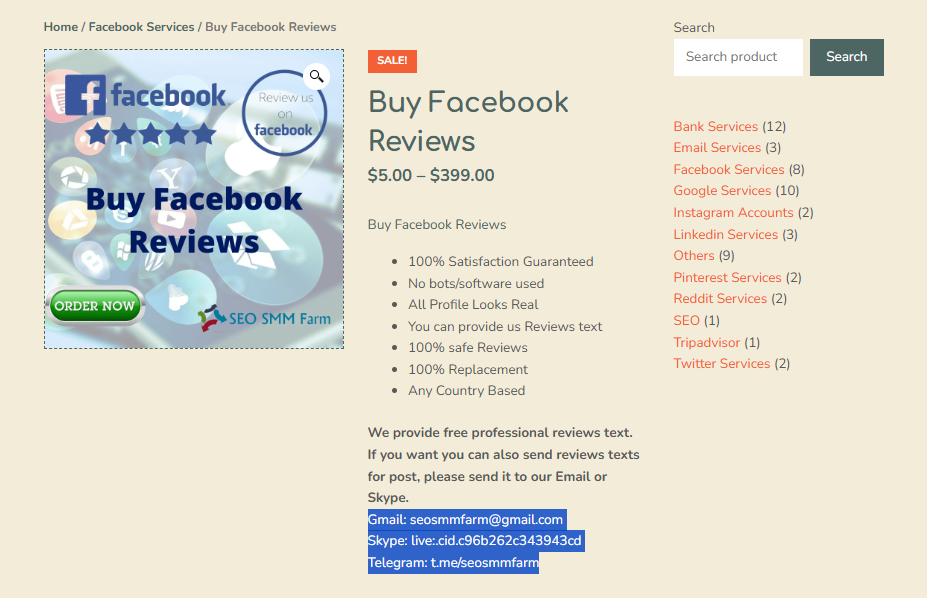The Best Practices for Writing High-Conversion Email Copy

Strong 8k brings an ultra-HD IPTV experience to your living room and your pocket.
In email marketing, the copy you write is the key to engaging your audience and driving conversions. Whether you're aiming to increase sales, grow your email list, or encourage a specific action, your email copy needs to be compelling and action-oriented. To write high-conversion email copy, it’s important to understand your audience, use persuasive language, and focus on delivering value.
In this article, we’ll walk you through some of the best practices for writing email copy that resonates with your audience and drives results.
1. Know Your Audience
Before you even begin writing, it’s crucial to understand who you’re writing for. High-conversion email copy speaks directly to the needs, pain points, and desires of the reader. If you don’t know your audience well, your email will miss the mark.
What you should do:
Segment your email list: Tailor your messaging to specific groups based on demographics, interests, or previous behaviors. For example, sending personalized offers to loyal customers is more effective than sending generic emails to everyone on your list.
Use customer data: Leverage behavioral data, such as past purchases, website visits, or email opens, to create more relevant content.
When your copy is personalized to meet the needs of your audience, it feels more relevant and encourages action.
2. Craft Attention-Grabbing Subject Lines
The subject line is the first thing your recipients see, and it determines whether they’ll open your email or delete it. Writing an effective subject line is a critical step in boosting email open rates, which directly impacts conversions.
What you should do:
Keep it short and to the point: Aim for 6-10 words that quickly convey the benefit of opening the email.
Create curiosity: Entice your readers with subject lines that spark curiosity or offer something valuable. For example, “Unlock 25% Off Your Next Purchase!” is more enticing than “Discount on Your Next Purchase.”
Use action words: Words like “Get,” “Claim,” and “Discover” create a sense of urgency and excitement.
Personalize when possible: Including the recipient’s name or other personal details in the subject line can increase open rates.
A strong subject line can be the difference between an email being opened or ignored.
3. Start with a Strong Hook
The first sentence of your email is your chance to capture attention. You’ve already got the recipient’s interest with the subject line, so now it’s time to keep them engaged. Your opening should be concise, compelling, and clearly convey what the reader will gain from continuing to read.
What you should do:
Use benefits over features: Instead of leading with what your product or service does, focus on how it will benefit the reader. For example, instead of saying, “Our software has advanced analytics,” say, “Get actionable insights that drive business growth.”
Make it conversational: Write as if you’re having a one-on-one conversation with the reader. This helps build rapport and makes your email more engaging.
The first few lines should quickly convey the value of reading the rest of the email.
4. Focus on the Value Proposition
Your email copy should focus on the value you are offering to the recipient. What’s in it for them? Whether you’re promoting a product, offering a discount, or encouraging sign-ups, make sure the value is clear and compelling.
What you should do:
Highlight the benefits, not just the features: For example, instead of simply describing your product’s features, explain how it will make the recipient’s life easier, save them time, or solve a problem.
Use bullet points for clarity: If you have several benefits to highlight, present them in a bulleted list. This makes it easier for the reader to digest the information quickly.
Be specific: Instead of vague phrases like “Great savings,” provide specific numbers or percentages: “Save 30% on your next order!”
Clearly articulating the value proposition is key to convincing your recipients that they should take action.
5. Create a Sense of Urgency or Scarcity
Creating a sense of urgency or scarcity can be a powerful motivator. If your audience feels like they might miss out on an opportunity, they’re more likely to act quickly.
What you should do:
Use time-sensitive offers: Phrases like “Limited time offer,” “Hurry, sale ends soon,” or “Only 10 items left!” can encourage immediate action.
Incorporate deadlines: Set a deadline for the offer, like “Offer expires in 24 hours,” to increase the urgency.
Use countdowns: Including a countdown timer in the email itself can visually reinforce the urgency and encourage readers to act before the offer expires.
Urgency and scarcity trigger FOMO (Fear of Missing Out), motivating the reader to act before it’s too late.
6. Keep Your Copy Concise and Easy to Read
When it comes to email copy, less is often more. Your audience is busy, and long-winded emails will likely be ignored. Aim for short, punchy paragraphs and keep your sentences straightforward.
What you should do:
Use short paragraphs: Large blocks of text can be overwhelming. Break your content into easily digestible chunks.
Use white space: Leave enough space around your text to make the email visually appealing and easy to scan.
Bullet points and subheadings: Use these elements to highlight key information and make it easy for readers to skim.
By keeping your email copy concise, you make it easier for the recipient to understand your message and take action.
7. Include a Clear and Compelling Call to Action (CTA)
The CTA is the most important part of your email—it’s where you direct your reader to take action. Whether it’s to make a purchase, sign up for a webinar, or download a free resource, your CTA should be easy to find and highly persuasive.
What you should do:
Be clear and direct: Use action-oriented language like “Shop Now,” “Get Started,” “Download Your Free Guide,” or “Claim Your Discount.”
Make it stand out: Use buttons or bold text to make the CTA prominent in the email.
Limit the number of CTAs: Too many CTAs can confuse the reader. Stick to one primary action you want the reader to take.
The CTA should be impossible to miss and compelling enough to drive clicks.
8. Personalize Your Email Copy
Personalization goes beyond just using the recipient’s name. It’s about tailoring your email content to the individual based on their behaviors, preferences, or demographic data.
What you should do:
Use dynamic content: Include personalized product recommendations based on previous purchases or website activity.
Segment your email list: Send relevant content to specific segments of your audience to ensure your messaging is highly targeted.
Use customer data: If you know a subscriber’s birthday, anniversary, or location, incorporate that information into the email to make the experience feel more personal.
Personalized emails make recipients feel seen and valued, which can increase engagement and conversions.
9. A/B Test Your Email Copy
A/B testing is the process of testing different versions of your email to see which one performs better. This is essential for optimizing email copy and continuously improving your conversion rates.
What you should do:
Test subject lines: Compare different approaches to see which one drives the highest open rates.
Test CTAs: Try different wording or button styles to see which one leads to more clicks.
Test email length: Some audiences prefer shorter emails, while others respond better to more detailed content. Test what works for your audience.
A/B testing allows you to fine-tune your email copy and create emails that convert better over time.
Conclusion
Writing high-conversion email copy is a skill that can have a significant impact on your email marketing success. By focusing on understanding your audience, crafting compelling subject lines, providing clear value, creating urgency, and optimizing your CTAs, you can write email copy that resonates with readers and drives conversions. Remember, writing effective email copy is an ongoing process—continuously test, analyze, and refine your approach to ensure you're getting the best results possible.
By implementing these best practices, you’ll be well on your way to writing email copy that turns readers into customers and drives your email marketing success.
Note: IndiBlogHub features both user-submitted and editorial content. We do not verify third-party contributions. Read our Disclaimer and Privacy Policyfor details.


